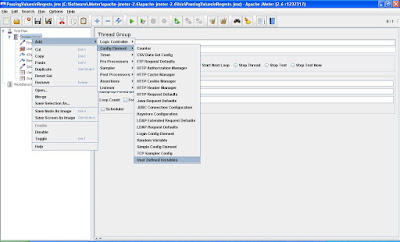Software development had a few years of relative calm. But now it’s picking up speed, as HTML5 gains a foothold and Windows 8 threatens to significantly change the Windows development landscape. If you want to stay ahead of the curve, you should consider learning at least a few of these 10 software development skills.
1: Mobile development
If you don’t think it is worth your time to learn mobile development, think again. Global shipments of Android phones in 2011 are almost equal to PC sales. Add in the other big-name mobile devices (iPhones, iPads, and even the “dying” RIM devices), and what you see is that mobile devices now dwarf PCs in sales. What does this mean? If you make your living from software that can run only on a PC (which includes Web sites that don’t work or are hard to use on mobile devices), now is the time to learn mobile development.
2: NoSQL
I appreciate a well-designed relational database schema as much as the next person, but they just are not appropriate for every project. We’ve been using them even when they aren’t the best tool because the alternatives haven’t been great. The last few years have seen the introduction of a wide variety of NoSQL database systems. And now that major service vendors (like Amazon and Microsoft) support NoSQL as well, there is no technical limitation on their use. Are they right for every project? No. Are they going to replace traditional databases? In some projects, and for some developers, definitely. This is the year to learn how to use them, as they will only become more prevalent in the year to follow.
3: Unit testing
We’ve seen unit testing go from being, “Oh, that’s neat” to being a best practice in the industry. And with the increasing use of dynamic languages, unit testing is becoming more and more important. A wide variety of tools and frameworks are available for unit testing. If you do not know how to do it, now is the time to learn. This is the year where it goes from “resume enhancement” to “resume requirement.”
4: Python or Ruby
Not every project is a good fit for a dynamic language, but a lot of projects are better done in them. PHP has been a winner in the industry for some time, but Python and Ruby are now being taken seriously as well. Strong arguments can be made for Ruby + Rails (or Ruby + Sinatra) or Python + Django as excellent platforms for Web development, and Python has long been a favorite for “utility” work. Learning Python or Ruby in addition to your existing skillset gives you a useful alternative and a better way to get certain projects done.
5: HTML5
HTML5 is quickly pulling away from the station. The impending release of IE 10 is the last piece of the puzzle to make the full power of HTML5 available to most users (those not stuck with IE 6 or IE 8). Learning HTML5 now positions you to be on the forefront of the next generation of applications. Oh, and most mobile devices already have excellent support for it, so it is a great way to get into mobile development too. And don’t forget: HTML5 is also one route for UI definitions in Windows 8!
6: Windows 8
Windows 8 should be released sometime in 2012, unless the schedule slips badly. While Windows 8 may very well get off to a slow start, being the top dog in an app store is often based on being the first dog in the race. The first mover advantage is huge. It is better to be in the Windows 8 app store at launch time than to take a wait-and-see approach. Even if Windows 8 sales disappoint, it’s better to be the only fish in a small pond than a fish of any size in a big pond, as recent app sales numbers have shown.
7: RESTful Web services
While I personally prefer the convenience and ease of working with SOAP in the confines of Visual Studio, REST is booming. Even Microsoft is starting to embrace it with OData. JSON really was the final straw on this matter, relegating SOAP to be for server-to-server work only. Unless your applications can run in isolation, not knowing REST is going to hold you back, as of 2012.
8: JavaScript
Before the Windows 8 Developer Preview, it was easy for non-Web developers to look at JavaScript as a Web-only language. No more! JavaScript is now a first-class citizen for native desktop and tablet development, thanks to the Metro UI and WinRT API in Windows 8. XAML + C# or VB.NET may be a good way for you to get things done, but if you want to maximize what you can get out of your knowledge, HTML5 and JavaScript are the best bet. They give you Web andMetro/WinRT, and you can also use them for some of the cross-platform mobile systems out there, like Appcelerator’s Titanium product.
9: jQuery
If you are going to do any kind of Web development where you are working directly with HTML, jQuery is becoming a must-know skill. While there are plenty of credible alternatives, jQuery is quickly turning into the de facto tool for rich UIs with HTML.
10: User experience
Other than getting that first mover advantage in new app stores, there is little to differentiate many applications on a feature basis; it’s a crowded field. User experience, on the other hand, is a different story. Creating a great user experience is not easy; it starts before anyone even downloads your application and continues through to the uninstall process. In the age of instant $0.99 and free app downloads, and ad-supported Web apps, the barriers to switching to another application are mighty low. If your user experience is poor, do not expect much business.
Reference: (Tech Republik)












